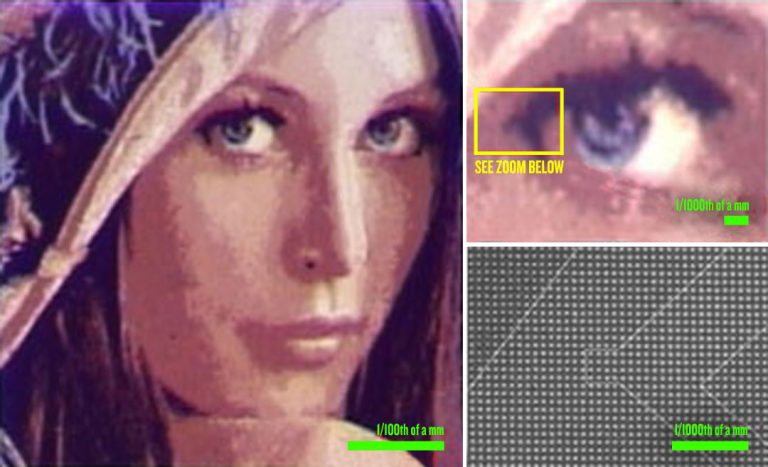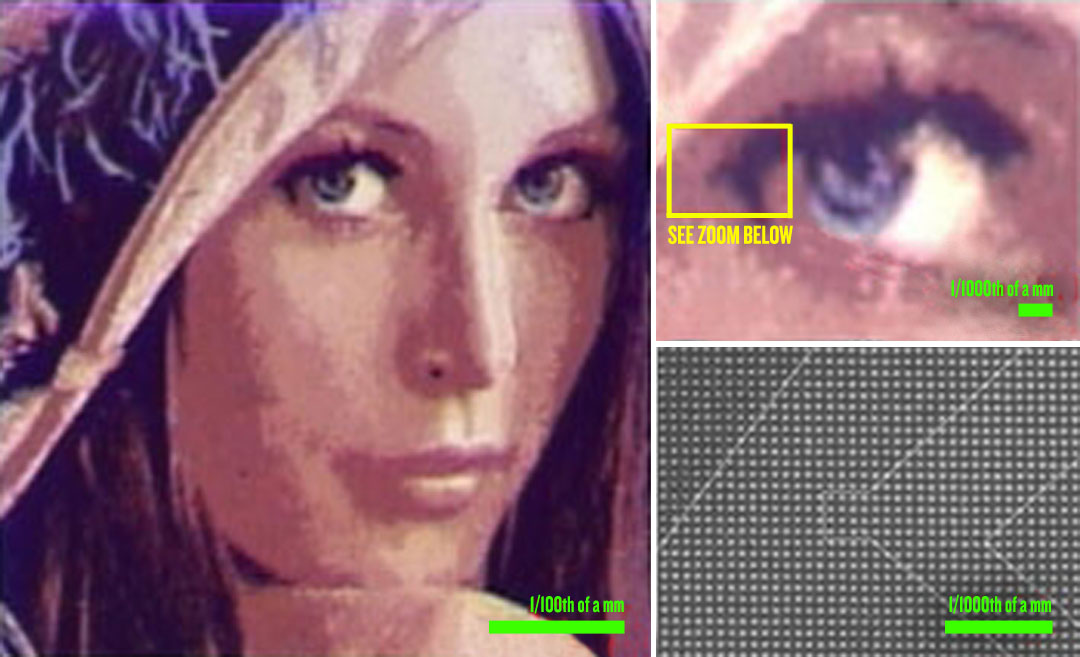I can remember when I had my iPhone 3G and thinking to myself how incredible the screen resolution was. I can also remember the first time I saw the screen of the iPhone 4 and being awestruck by the high-res images of the apps and thinking to myself: “Screw the 3G! Nothing can ever top this!” When Steve Jobs launched the iPhone 4, he made the worthy claim that the human eye was incapable of picking apart the pixels of the Retina Display‘s 326 dots per inch (DPI) resolution when held at reading distance. I just looked at my own iPhone 4 and it’s hard to disagree with that. But the laws of physics reveal that the human eye has a resolving power up to a limit of 100,000 DPI.
So would technology ever allow us to print something at such a mind-boggling resolution? As The Economist pointed out yesterday, researchers in Singapore have developed a breakthrough method of printing using an electron beam. The following is an excerpt from The Economist: “The electron beam carves bits of this away, leaving a pattern of cylindrical posts each about 140 nanometres (billionths of a metre) across and 50 nanometres apart. That “about” is important, though. The exact diameters of the posts and the distances between them are crucial. Varying them changes the colour that forms between the posts. To create this colour, the plate is coated with a layer of silver and another of gold. The outer electrons of the atoms of these heavy metals often come loose, to form a cloud akin to an electronic gas. When light falls on this gas, it absorbs all frequencies bar one, which is reflected. Exactly which frequency is reflected depends on the resonant frequency at which the electron gas vibrates. And that, in turn, depends on how far apart the silicon posts (which constrain the gas’s movements) are. A coloured image can thus be made by varying the size and spacing of the posts.”
You can read the full story by visiting The Economist. For more great stories from the world of technology be sure to visit FEELguide Technology.



